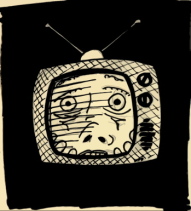DNA in Series and Parallel
 Wednesday, December 12, 2007
Wednesday, December 12, 2007 
quattro-colored dna pastaModeling biological systems sure seems to be radically different from modelling something such as a chain of balls on springs. For balls on springs, Newton's 2nd law is written for each mass, yielding a pretty straightforward system of differential equations. The positions and velocities of the masses in time are the solutions to the system. Each variable x(t) in any of the differential equations refers directly to the actual position of a specific mass. For bio models, however, modeling is done more at a meta-level using a systems approach. For example, you wouldn't normally see Newton II applied in pharmokinetic modeling; instead a compartment model where the compartments are body systems such as blood stream, gut, etc. is typically used, often with great predictive power.
What about population modeling, and especially modelling of interacting species? Is this closer to balls on springs, or a compartment model? The differential equations that are typically used to predict the behavior of these populations employ mathematical expressions of the interactions chosen to produce a desired population behavior. Predator-Prey, mutual competition, and cooperation models are really the same with just minor changes to the terms in a differential equation system. I then think of this type of modeling more like compartments - the interaction terms are plugged into the differential equations in a manner analogous to building models with compartments.










